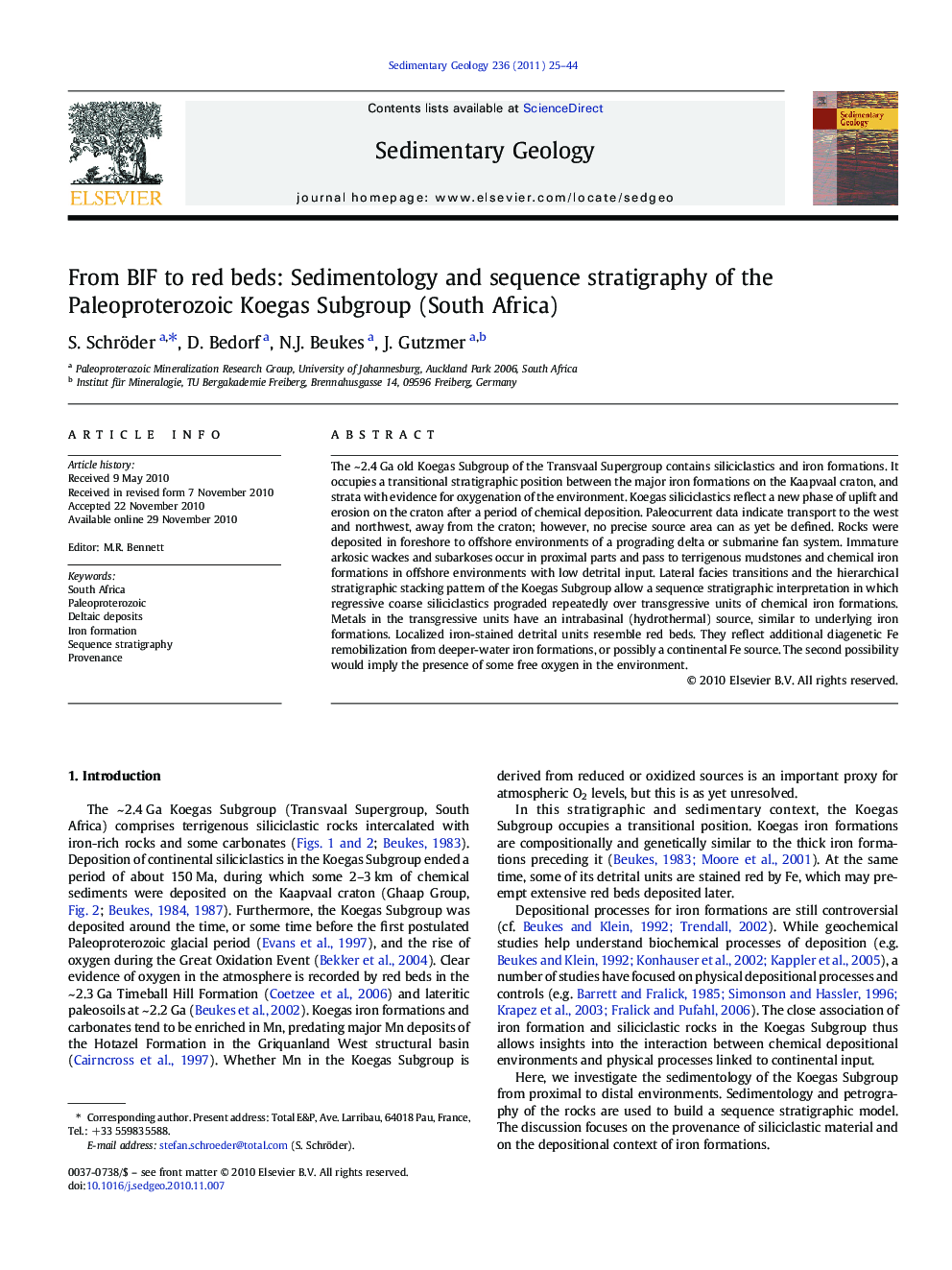| Article ID | Journal | Published Year | Pages | File Type |
|---|---|---|---|---|
| 4690126 | Sedimentary Geology | 2011 | 20 Pages |
The ~ 2.4 Ga old Koegas Subgroup of the Transvaal Supergroup contains siliciclastics and iron formations. It occupies a transitional stratigraphic position between the major iron formations on the Kaapvaal craton, and strata with evidence for oxygenation of the environment. Koegas siliciclastics reflect a new phase of uplift and erosion on the craton after a period of chemical deposition. Paleocurrent data indicate transport to the west and northwest, away from the craton; however, no precise source area can as yet be defined. Rocks were deposited in foreshore to offshore environments of a prograding delta or submarine fan system. Immature arkosic wackes and subarkoses occur in proximal parts and pass to terrigenous mudstones and chemical iron formations in offshore environments with low detrital input. Lateral facies transitions and the hierarchical stratigraphic stacking pattern of the Koegas Subgroup allow a sequence stratigraphic interpretation in which regressive coarse siliciclastics prograded repeatedly over transgressive units of chemical iron formations. Metals in the transgressive units have an intrabasinal (hydrothermal) source, similar to underlying iron formations. Localized iron-stained detrital units resemble red beds. They reflect additional diagenetic Fe remobilization from deeper-water iron formations, or possibly a continental Fe source. The second possibility would imply the presence of some free oxygen in the environment.
